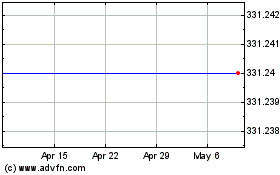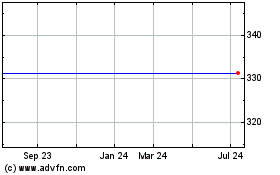The New England Journal of Medicine publishes LEVANT 2 results for the Lutonix® Drug Coated Balloon, showing superior effi...
June 25 2015 - 7:30AM
Business Wire
C. R. Bard, Inc. (NYSE:BCR) today announced the publication of
results from the LEVANT 2 study in the June 24, 2015 online issue
of The New England Journal of Medicine. Results from LEVANT 2
demonstrated superior primary patency for Lutonix® 035 Drug Coated
Balloon PTA Catheter (Lutonix® DCB) over standard percutaneous
transluminal angioplasty (PTA), as well as safety consistent with
standard PTA balloons. The Lutonix® 035 DCB is an angioplasty
balloon coated with a therapeutic dose of the drug paclitaxel, and
also utilizes standard mechanical dilatation of the vessel to
restore blood flow for patients with peripheral arterial disease
(PAD) in the femoropopliteal arteries.
The Lutonix® 035 DCB was the first drug coated balloon approved
by the U.S. Food and Drug Administration (FDA) in October 2014.
This approval followed a unanimous favorable recommendation from
the FDA’s Circulatory Systems Devices Advisory Panel, which voted 9
to 0 on each element of safety, efficacy and benefit/risk.
The LEVANT 2 pivotal study is a global, prospective,
single-blind, randomized, 54-site study (42 sites in the U.S. and
12 in Europe) that enrolled all patients under one protocol,
comparing Lutonix® 035 DCB with standard PTA.
According to Kenneth Rosenfield, M.D., M.H.C.D.S., Section Head,
Vascular Medicine and Intervention, in the Division of Cardiology
and Fireman Vascular Center at Massachusetts General Hospital, who
was Principal Investigator for the Study, “LEVANT 2 followed a
rigorous blinding protocol, which was designed to reduce bias in
the results. In addition to superiority in primary patency, the
paclitaxel-coated balloon used in the study also demonstrated
sustained improvements in Rutherford category from baseline to 12
months, and improved patient-reported walking distance scores.”
“The publication of these data in the prestigious New England
Journal of Medicine reinforces not only the superior results for
Lutonix® 035 DCB compared to standard PTA, but also the rigor of
the clinical trial. This should provide additional confidence to
clinicians looking to use a drug coated balloon in treating PAD in
the femoropopliteal arteries,” said Dr. John A. DeFord, Senior Vice
President, Science, Technology & Clinical Affairs, C. R. Bard,
Inc.
According to the American Heart Association, PAD affects nearly
8 million Americans with more than 50% of cases involving the SFA
and popliteal arteries. Globally nearly 202 million patients suffer
from this disease, which if untreated could increase the risk of
heart attack or lead to death. Patients with PAD have reduced blood
flow to their lower extremities due to narrowed arteries and carry
the risk of amputations. Amputations or limb loss can cause huge
physical and psychological burdens to patients and significant
costs to the healthcare system.
Timothy M. Ring, chairman and chief executive officer,
commented, “We want to thank the investigators involved in the
LEVANT 2 trial for their authorship of this ground-breaking study.
Publication of the study results in The New England Journal of
Medicine demonstrates the high quality of the trial and the
importance of the results.”
C. R. Bard, Inc. (www.crbard.com),
headquartered in Murray Hill, NJ, is a leading multinational
developer, manufacturer and marketer of innovative, life-enhancing
medical technologies in the fields of vascular, urology, oncology
and surgical specialty products.
This press release may contain forward-looking statements within
the meaning of the Private Securities Litigation Reform Act of
1995, which are based on management’s current expectations, the
accuracy of which is necessarily subject to risks and
uncertainties. These statements are not historical in nature and
use words such as “anticipate”, “estimate”, “expect”, “project”,
“intend”, “forecast”, “plan”, “believe”, and other words of similar
meaning in connection with any discussion of future operating or
financial performance. Many factors may cause actual results to
differ materially from anticipated results including product
developments, sales efforts, income tax matters, the outcomes of
contingencies such as legal proceedings, and other economic,
business, competitive and regulatory factors. The company
undertakes no obligation to update its forward-looking statements.
Please refer to the Cautionary Statement Regarding Forward-Looking
Information in our March 31, 2015 Form 10-Q for more detailed
information about these and other factors that may cause actual
results to differ materially from those expressed or implied.
View source
version on businesswire.com: http://www.businesswire.com/news/home/20150625005508/en/
Investor Relations:Todd W. Garner,
908-277-8065Vice President, Investor
RelationsorMedia Relations:Scott T. Lowry,
908-277-8365Vice President and Treasurer
Bard C R (NYSE:BCR)
Historical Stock Chart
From Mar 2024 to Apr 2024

Bard C R (NYSE:BCR)
Historical Stock Chart
From Apr 2023 to Apr 2024
